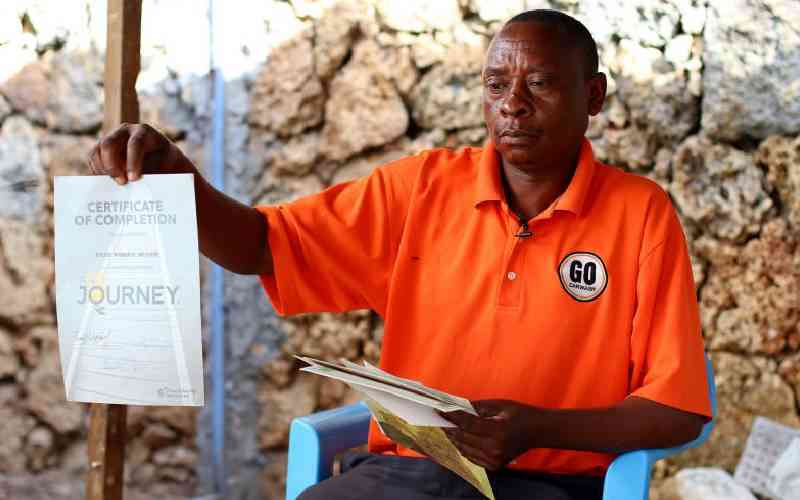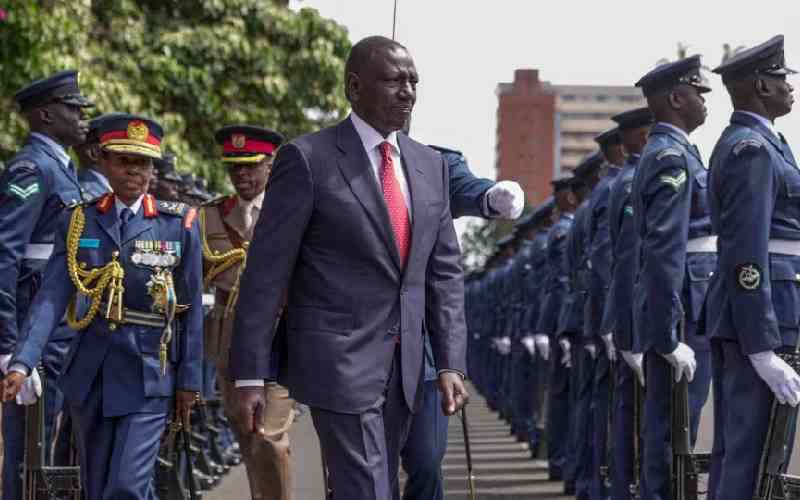
The row between land owners in Naivasha and Kenya Wildlife Service (KWS) over the translocation of giraffes has deepened.
The land owners have accused KWS of failing to follow the laid down procedures.
It has emerged that the wild animals are being transported to a private sanctuary in Mombasa.
A fortnight ago, KWS embarked on translocation of giraffes from North Lake Naivasha without engaging the land owners, who for years have fed and protected the animals.
KWS has confirmed the translocation of giraffes' to the Coast and admitted that there was a communication breakdown during the exercise.
The agency's Assistant Director Joseph Dadacha downplayed the row, saying KWS has since contacted the land owners who have given a go-ahead for the exercise with the first batch of three giraffes moved to the Coast.
"There was a communication breakdown during the start of the exercise, but this has since been addressed, and the translocation is going on smoothly," he said.
However, one of the landowners who declined to be named questioned the rationale of getting the animals from Naivasha, which was hundreds of kilometres away from Mombasa.
The rancher claimed that their investigations had established that the giraffes were being ferried to a private sanctuary owned by a senior government officer.
"In the past, we have worked with KWS in translocation of different species of animals, and we are wondering why the secrecy in this exercise," said the rancher.
Friends of Lake Naivasha chairman Francis Muthui, noted that there were tens of giraffes in Amboseli and Tsavo National Parks closer to Mombasa.
"The translocation of these giraffes is being undertaken in secrecy, and there are more questions than answers over this illegal exercise," he said.
Muthui said that the exercise had strained the good working relationship between the land owners who had protected the wild animals for years and KWS.
Stay informed. Subscribe to our newsletter
He revealed that some of the animals were being held in a holding area, awaiting the capture of others so that they could be ferried together.
"Over 80 per cent of wild animals in Naivasha are outside parks, and it's the land owners who use their sanctuaries to feed, water and protect them from the rising number of poachers," he said.
 The Standard Group Plc is a
multi-media organization with investments in media platforms spanning newspaper
print operations, television, radio broadcasting, digital and online services. The
Standard Group is recognized as a leading multi-media house in Kenya with a key
influence in matters of national and international interest.
The Standard Group Plc is a
multi-media organization with investments in media platforms spanning newspaper
print operations, television, radio broadcasting, digital and online services. The
Standard Group is recognized as a leading multi-media house in Kenya with a key
influence in matters of national and international interest.
 The Standard Group Plc is a
multi-media organization with investments in media platforms spanning newspaper
print operations, television, radio broadcasting, digital and online services. The
Standard Group is recognized as a leading multi-media house in Kenya with a key
influence in matters of national and international interest.
The Standard Group Plc is a
multi-media organization with investments in media platforms spanning newspaper
print operations, television, radio broadcasting, digital and online services. The
Standard Group is recognized as a leading multi-media house in Kenya with a key
influence in matters of national and international interest.





